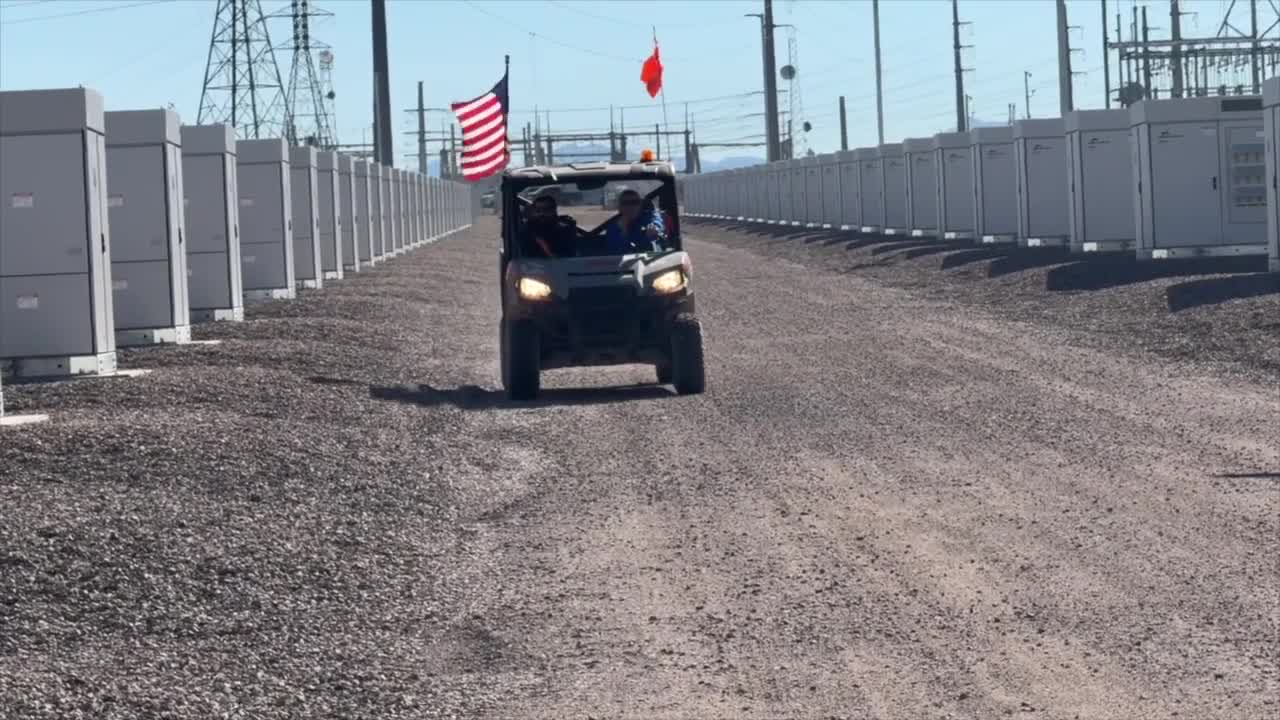TUCSON, Ariz. (KGUN) — Faced with rising summer temperatures and increased strain on Arizona’s power grid, utility Tucson Electric Power hosted a ribbon-cutting Wednesday for its newest battery energy storage facility, Roadrunner Reserve.
At the event, Governor Katie Hobbs declared the project “powering the future of Arizona.” “It’s been said a couple times that this project is powering the future of Arizona,” Hobbs said. “And that is absolutely true.”
Government officials and TEP representatives gathered at the facility, located on the southeast side of Tucson, where the utility is storing solar-generated energy during off-peak hours for use later in the day.
TEP spokesman Joe Salkowski explained that “it’s actually been operating through the summer … and it has helped us provide affordable, reliable energy for our customers.” He added, “This system is able to store that energy and deploy it … during the hours of the day when our customers need energy most. Which is typically toward the last afternoon and early evening.”
Salkowski emphasized the system’s performance in recent months, too. “It has been critical in helping us meet this summer’s energy needs. Both reliably and affordable.”
The Roadrunner Reserve system has a capacity of 200 megawatts (MW) and can store 800 megawatt-hours (MWh) of energy — enough to power approximately 42,000 homes for four hours.
TEP expects to charge the system during the morning and early afternoon, when solar output is strong and rates are lower, then deploy the stored energy during peak demand periods. The project is one of the largest battery energy storage systems in Arizona.
Hobbs, reflected on the broader role of such grid infrastructure within the state. “These are the type of projects that we need to be investing in, and the state is here to be a true partner for years to come,” she said.
With grid-reliability concerns mounting in the face of hotter summers, the Roadrunner Reserve facility underscores TEP’s push to diversify its energy mix and support its long-term goal of net-zero direct greenhouse-gas emissions by 2050.
While the utility did not specify the exact cost of the facility, Salkowski noted that “the first phase of this system is an investment that’s incorporated in the rate proposal that’s pending before the Arizona Corporation Commission.”
Looking ahead, TEP is already constructing a second phase of the Roadrunner Reserve project, known as Roadrunner Reserve II, also 200 MW/800 MWh, which is slated to come online by spring 2026. The utility says this expansion will further bolster service reliability for customers during the demanding summer months and support the region’s transition to cleaner energy.
——
Eddie Celaya is a multimedia journalist at KGUN 9. Born in Tucson and raised in the Phoenix area, Eddie is a life-long Arizonan and graduate of the University of Arizona who loves the desert and mountains and hates the cold. Previously, Eddie worked in print media at the Arizona Daily Star. Share your story ideas with Eddie at edward.celaya@kgun9.com, or by connecting on Facebook or Instagram.

----
STAY IN TOUCH WITH US ANYTIME, ANYWHERE





